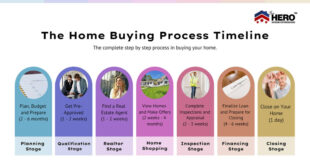Adjustable Rate Mortgage Explained: Understanding ARM Loans. When considering a home loan, understanding the various types available can save you significant time and money. One popular option is the Adjustable Rate Mortgage (ARM), a loan type that offers flexibility and potential savings. However, ARM loans come with their own complexities, making it crucial to understand their structure, benefits, and potential risks.
This guide explores Adjustable Rate Mortgages, explaining how they work, their pros and cons, and whether they might be the right choice for your financial situation.
What is an Adjustable Rate Mortgage (ARM)?
An Adjustable Rate Mortgage (ARM) is a type of home loan where the interest rate changes periodically. Unlike fixed-rate mortgages, which maintain a constant interest rate throughout the life of the loan, ARMs feature an initial fixed period followed by periodic adjustments based on market rates.
Key features of ARMs include:
- Initial Fixed Period: Typically 5, 7, or 10 years with a stable interest rate.
- Adjustment Period: Rates adjust annually, semi-annually, or as specified.
- Index and Margin: Adjustments depend on an index (e.g., LIBOR or SOFR) and a margin added by the lender.
How Does an Adjustable Rate Mortgage Work?
- Initial Rate Period: Borrowers enjoy a lower introductory rate compared to fixed-rate mortgages.
- Rate Adjustments: Once the initial period ends, rates reset periodically based on market conditions.
- Caps and Limits: ARMs often include caps to limit how much rates or payments can increase during adjustments.
For example, in a 5/1 ARM, the rate is fixed for the first five years, then adjusts annually.
Pros and Cons of Adjustable Rate Mortgages
Advantages:
- Lower Initial Payments: Ideal for borrowers planning to sell or refinance before the first adjustment.
- Flexibility: Suitable for those expecting income growth or temporary housing needs.
- Potential Savings: Beneficial if market rates decrease after the adjustment period.
Disadvantages:
- Uncertainty: Payments can increase significantly after adjustments.
- Complexity: Understanding index, margin, and caps requires careful study.
- Market Dependency: Rising rates can result in higher payments.
Who Should Consider an Adjustable Rate Mortgage?
- Short-Term Homeowners: Planning to sell or move within the initial fixed-rate period.
- Investors: Seeking properties with lower initial costs.
- Borrowers with Future Income Growth: Comfortable managing potentially higher payments later.
Types of Adjustable Rate Mortgages
- Hybrid ARMs: Combine fixed and adjustable periods (e.g., 5/1, 7/1 ARMs).
- Interest-Only ARMs: Payments cover only interest for an initial period, followed by larger principal and interest payments.
- Option ARMs: Allow borrowers to choose among payment options, such as minimum or interest-only payments.
How to Qualify for an Adjustable Rate Mortgage
- Credit Score: Higher scores result in better terms.
- Debt-to-Income Ratio (DTI): Lenders prefer a lower DTI.
- Down Payment: A larger down payment reduces risk for lenders.
- Income Verification: Proof of stable income is required.
Adjustable Rate Mortgages vs. Fixed-Rate Mortgages
| Feature | ARM | Fixed-Rate Mortgage |
|---|---|---|
| Interest Rate Stability | Variable after fixed period | Constant throughout the loan |
| Initial Cost | Lower | Higher |
| Best For | Short-term homeowners | Long-term stability seekers |
10 Tips for Managing an Adjustable Rate Mortgage
- Understand Rate Caps: Know the maximum possible increase in payments.
- Monitor Market Trends: Stay informed about interest rate movements.
- Plan Ahead: Budget for potential rate hikes.
- Consider Refinancing: Switch to a fixed-rate mortgage if rates rise.
- Save for Adjustments: Set aside funds for increased payments.
- Negotiate Terms: Look for ARMs with favorable caps and margins.
- Read the Fine Print: Understand all terms in the loan agreement.
- Consult Experts: Work with a mortgage broker or financial advisor.
- Evaluate Long-Term Costs: Consider total payments over the loan term.
- Avoid Over-Borrowing: Ensure payments are manageable, even if rates rise.
10 FAQs About Adjustable Rate Mortgages
- What is the main benefit of an ARM?
Lower initial interest rates and payments compared to fixed-rate mortgages. - How often do ARM rates adjust?
Typically annually, but this varies by loan terms. - What is a rate cap?
A limit on how much the interest rate or monthly payment can increase. - What happens if rates drop during my ARM?
Your payments may decrease, depending on the index. - Are ARMs risky?
They can be, especially if rates rise significantly. - Can I refinance an ARM?
Yes, many borrowers refinance before the first adjustment. - What’s the difference between a 5/1 and 7/1 ARM?
The fixed period is five years for 5/1 ARMs and seven years for 7/1 ARMs. - Is an ARM good for first-time homebuyers?
It depends on their financial situation and plans. - How is my rate adjustment calculated?
It’s based on the index rate plus the lender’s margin. - Can I pay off an ARM early?
Most ARMs allow early payment, though some may include prepayment penalties.
Conclusion
Adjustable Rate Mortgages offer an attractive option for borrowers seeking lower initial payments and flexibility. However, they require careful planning and understanding of their mechanics. By evaluating your financial goals, market trends, and potential risks, you can determine whether an ARM aligns with your needs.
While ARMs can lead to savings, they also carry the possibility of higher future costs. Be sure to consult a mortgage expert and thoroughly analyze your options before committing to this type of loan. With the right preparation, an Adjustable Rate Mortgage can be a powerful tool in achieving your homeownership dreams.
 mortgage.kbk.news
mortgage.kbk.news
